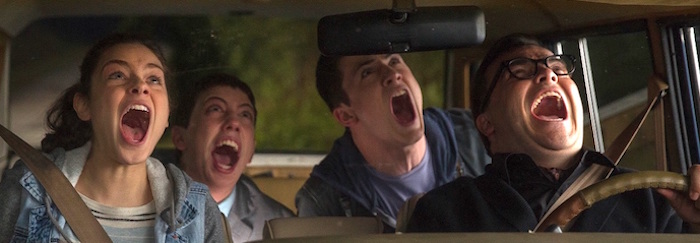Whole-Movie ESL/EFL Lessons

Extensively Revised: Feb. 2016
Jump to:
- CATESOL-- Lights, Camera, Action!
- Footnotes on Web Design
- Blockbuster Methodology (Learning and Acquisition)
- The Affective Filter Meets the Monitor
- Vocabulary, Vocabulary, Vocabulary
- Blended Learning - ESL for the 21st Century
- Movies Bring Language to Life
- Recommendations for Choosing a Great Movie
- The Streamlined ESL Movie Lesson
- Showtime in the Classroom
- Copyright 101 (Big update, April, 2018)
- Why Whole-Movie Lessons cost (only) $1 USD
- Conclusion
A Brief Case for Using Movies
in the ESL and EFL Classroom
From Humble Beginnings
I'd like to share my experience with using movies in the ESL classroom and how this all lead to the creation of Movies Grow English. My story begins probably in 1996, when I became an ESL instructor at University of California, Los Angeles (UCLA), USA. By 1998, I had also become an ESL lecturer at California Institute of Technology (Caltech) in Pasadena. At UCLA, I soon began teaching the afternoon Movie Elective, a popular class which would meet four hours per week. At Caltech, I found that I could occasionally share movies with my evening graduate students to help break up the intense humdrum of their relentless scientific studies. After a long tenure at UCLA, I transitioned to University of Southern California (USC) in 2014 where I continue my journey of exploration and serendipity in the quest for a fuller understanding of how movie magic grows English and brings dreams to life. My outlook for using movies in the classroom has developed as a result of these rich and varied experiences.
As the Movie Elective Instructor at UCLA and Lecturer at USC and Caltech, I have been given the opportunity to develop teaching material for using movies interactively in the ESL classroom, but which movies? Early on, my eager-to-learn English students pointed out that a teacher's personal favorite oldie might not be a student's idea of a good movie-watching experience. And it did not take long for me to realize that with each new wave of students, they stay young while their teacher gets older. To have a better chance for success, I would need to take a broader perspective on movie selection and experiment with new ways to create teaching material. At the same time, I wanted to provide the opportunity for my frisky young scholars to discover and appreciate the movie classics that I continue to appreciate.
![]() So with time and experimentation, I've refined an efficient system for managing the use of whole movies in the ESL classroom. This includes a method for selecting movies, a template around which to create interactive whole-movie ESL lessons, and a motivating approach for using movies in the English-learning classroom. Through trial and error and with suggestions from colleagues, I've continued to improve the template and its resulting whole-movie lessons which are now available at Movies Grow English.
So with time and experimentation, I've refined an efficient system for managing the use of whole movies in the ESL classroom. This includes a method for selecting movies, a template around which to create interactive whole-movie ESL lessons, and a motivating approach for using movies in the English-learning classroom. Through trial and error and with suggestions from colleagues, I've continued to improve the template and its resulting whole-movie lessons which are now available at Movies Grow English.
In 2013, I began to formalize my interest in short-sequence lessons and realized that they can be awesome in a grammar/writing or oral skills class, and they don't require as much classroom time as whole-movie ESL lessons. I've developed a flexible template from which an ESL lesson can be shaped around most any short sequence and used in a number of ways. It was pleasing to discover that short sequences can be a great way to punch up the classroom routine and bring greater fun and diversity into the interactive ESL learning environment.
My colleagues at USC, Caltech and UCLA have been generous in sharing their short-sequence ESL classroom idea. I've pulled together lesson summaries of their teaching activities along with those from my own playbook, and if you link to Short Sequence on the menu bar, you'll find the full discussion of this topic. What follows below will focus mainly on whole-movie ESL lessons.
CATESOL 2009 & 2015 -- Lights, Camera, Action!
At the 2009 CATESOL Conference in Pasadena, California, Scott Gist (a UCLA Extension colleague) and I delivered an enthusiastically-received presentation entitled "Using Movies for Interactive ESL Instruction." Scott's contributions to this presentation were invaluable because of both what he contributed and what he helped pull out of my head, and he crafted much of the meta-language to describe what he and I had been doing in the classroom. In addition, Scott has a strong background in movies and theater, which was also a big asset. Link here for an Abstract and Summary of the presentation.
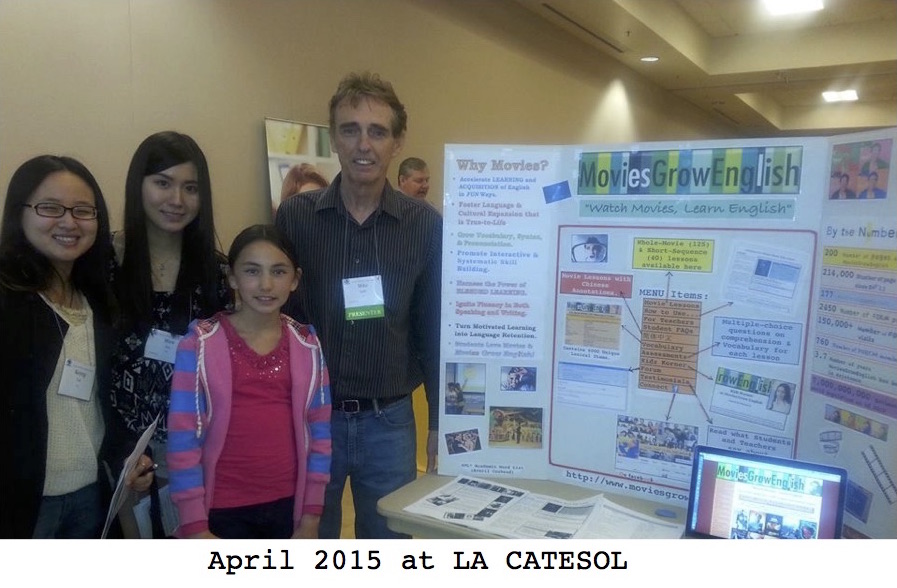 For me, this presentation was a validation of the experience and knowledge I had gained about exploiting movies to motivate interactive learning in the ESL classroom. It was an exciting revelation to discover that I may have danced into a pasture of plenty which others in my profession might also benefit from. Out of the Pasadena presentation, the idea of Movies Grow English was conceived.
For me, this presentation was a validation of the experience and knowledge I had gained about exploiting movies to motivate interactive learning in the ESL classroom. It was an exciting revelation to discover that I may have danced into a pasture of plenty which others in my profession might also benefit from. Out of the Pasadena presentation, the idea of Movies Grow English was conceived.
However, a dream is nothing without a plan, and I still lacked the know-how and confidence to tackle the precipitous learning curve of web design. Then in early 2010 (with encouragement from Nancy Sander at West Los Angeles College, ESL Department), I completed an online tutorial using ETUDES, which provided the brain pop I needed to get my paws on a copy of DreamWeaver and press forward with this project.
After a couple months of cyber hand-wringing, tooth-pulling, and arm-twisting those cascading style sheets (that actually save time once you figure out how those little monsters work), Movies Grow English took its first tentative baby steps on the world wide web. It was December, 2010. Since then, Movies Grow English has become a 200+ page of expression of my passion for bringing movies and ESL together. Here is where you'll find both Short-Sequence and Whole-Movie English Lessons, which can be used "as is" or easily adapted to one's own teaching style.
For the record, in 2015 I delivered two movie-based ESL lesson poster presentions. One was at the April LA Regional CATESOL in Los Angeles; the other at the November State-Wide CATESOL Conference in Anaheim. (rollover photos above). These events were outstanding opportunities to meet one-on-one with fellow presenters and participants, and to hear about their experiences with using movies in the ESL classroom. At one point during my poster presentation at the state-wide conference, Joe McVeigh stopped by and said hi. I later learned that he was the Plenary Speaker at this event. It was an honor to have the opportunity to speak with him as well as so many others.
Footnotes on Web Design
For those thinking of starting their own education website, I suggest the following resources: My web host is iPage. It is ridiculously inexpensive and has good tech support. I also use these two books: "Teach Yourself Visually, Adobe DreamWeaver" by Janine Warner, and "Search Engine Optimization Secrets" by Danny Dover. Finally, The Site Wizard by Christopher Heng is an online resource for website creation, that comes highly recommend.
Blockbuster Methodology
Learning vs. Acquisition
During my heady grad school days there was this raging debate among ESL scholars about the relative merits of language acquisition vs. language learning. As I remember, the acquisition practitioners would queue up behind Stephen Krashen, the renowned professor of linguistics at University of Southern California (USC), who published Principles and Practice in Second Language Acquisition and Explorations in Language Acquisition and Use. The true believers of learning English stood steadfast with Marianne Celce-Murcia, the renowned UCLA professor of Applied linguistics, whose most well-known publication is The Grammar Book: An ESL/EFL Teacher's Course.
Clearly, the ESL battle lines were being drawn . . . Or were they? . .
Goosebumps (2015 Columbia Pictures)
I recall that in those days, if you put your ear to the ground and listened carefully, you might hear both Celce-Murcia and Krashen, the two 800-pound gorillas in the room, actually praising the merits of each other's work. Such sacrilege. But wait . . . They were the only two who seemed to notice that language learning and acquisition might just be intrinsically fused at the hip, coexisting as one, in perfect auto-symbiosis. Since I couldn't decide which side to choose, I chose both--learning and acquisition.
Research and anecdotal evidence indicate that children are more predisposed to language acquisition than adults, especially with pronunciation. Adults, on the other hand, are generally much better at language learning because they have been trained to process information. Fair enough, but what if adult language learners could find a way to reconnect with the subliminal imprinting of language acquisition? What if it were true that, as we age, we lose the ability to acquire language simply because the disposition of our comfort zones become more defined and precious as a way of protecting our sense of cultural identity and the patterns of our lives? What if we could consciously lower these barriers and reactivate the absorbent mind of the child inside of us? Could our adult minds once again become more flexible and receptive to the power of language acquisition? How can this be achieved? Is this not something that ESL teachers have already accomplished by showing movies in the classroom?
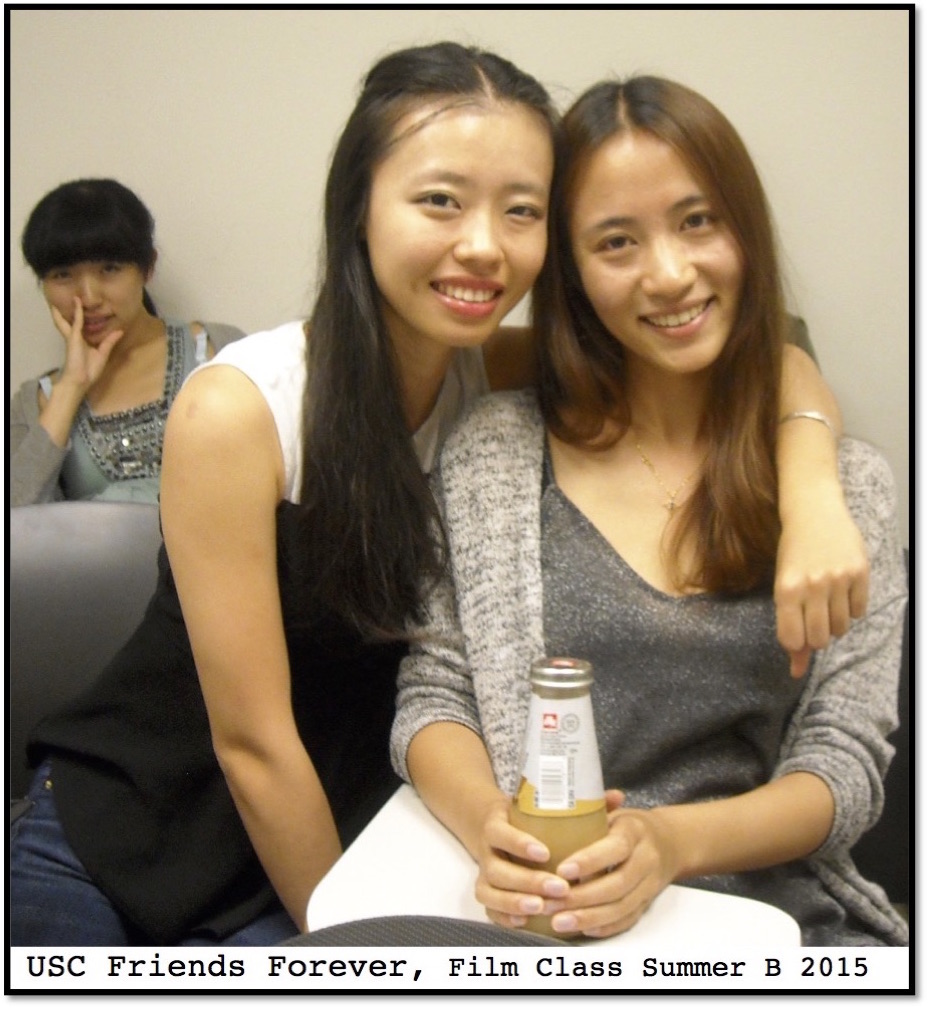 I have observed that one of the best ways movies support language development is that they seem be an ideal catalyst for reawakening the inner child who was once able to acquire amazingly complex grammar by the age of six (Krashen). Movies allow the adult learner, who has been trained to analyze and process the complexities of language, to benefit from the power of language acquisition much as they did when they were that child.
I have observed that one of the best ways movies support language development is that they seem be an ideal catalyst for reawakening the inner child who was once able to acquire amazingly complex grammar by the age of six (Krashen). Movies allow the adult learner, who has been trained to analyze and process the complexities of language, to benefit from the power of language acquisition much as they did when they were that child.
I've noticed a change in my students when they watch a movie and talk about a movie. I've also noticed how movie watching inspires students to retain vocabulary, mimic native-speaker grammar and pronunciation, and inject more creativity into their writing. I see all of this as strong evidence that movies are indeed a catalyst for establishing a powerful unity of learning and acquisition. How might movies accomplish this?
n.b. For a brief summary of the relative merits of acquisition and learning, please read Language Acquisition vs. Language Learning by Judie Haynes.
The Affective Filter Meets the Monitor
There are two theoretical constructs in the realm of learning and acquisition which may help explain why movies bring language to life, the affective filter and the monitor. Both were identified and described by Stephen Krashen at USC. Anecdotal evidence suggests that they tend to correlate.
The affective filter has been described as the hypothetical impediment to language production caused by anxiety and boredom. A low affective filter correlates with a high comfort level, which is considered conducive to learning and acquisition of language. Thus, it is widely regarded as a goal of classroom management in ESL. I have observed that movie watching does much to lower the affective filter of students in the ESL learning environment.
Whenever someone mentions the monitor, my first thought may be of that big scaly lizard with a long bifurcated tongue and a bad attitude. Then I am reminded of my graduate school seminars with Dr. Vanessa Wenzell where we discussed the importance of the monitor, which is described as the process of self-correction in language production by applying the learned rules of vocabulary and grammar.
 The observant ESL teacher notices when students self-correct. If the teacher suggests a correction, it may be because the student has not activated the monitor—is not self-correcting. Since most students would rather self-correct than be corrected, they will probably activate the monitor at this point. However, it seems that too much monitoring from the teacher will raise the affective filter (not good). Thus, the greatest amount of monitor combined with the least amount of affective filter is the desired correlation in the ESL classroom.
The observant ESL teacher notices when students self-correct. If the teacher suggests a correction, it may be because the student has not activated the monitor—is not self-correcting. Since most students would rather self-correct than be corrected, they will probably activate the monitor at this point. However, it seems that too much monitoring from the teacher will raise the affective filter (not good). Thus, the greatest amount of monitor combined with the least amount of affective filter is the desired correlation in the ESL classroom.
Using a movie is a great way to generate this dual objective because one byproduct of a successful movie-watching experience is that it helps lower the affective filter which tends to stimulate the students' desire to express themselves in both speaking and writing.
This creates a lot of headroom in which the monitor can operate. The wise language instructor, especially in an intensive academic English program, can take advantage of this benefit by lavishly encouraging self-correction during movie-discussion time and when writing about a previously-viewed movie. Thus, with the added headroom of a lowered affective filter, students, while watching and reacting to a movie, may become more receptive to both self-correction and being corrected.
Vocabulary, Vocabulary, Vocabulary
Keith Folse of University of Central Florida (UCF), USA published Vocabulary Myths: Applying Second Language Research to Classroom Teaching (2004). In it, he stresses that vocabulary is the most important aspect of language learning and shares the research and common sense that supports this hypothesis. One of the eight commonly held myths detailed in his book is that vocabulary is best retained when presented in semantic sets (words grouped by meaning, e.g. days of the week). Instead, according to Vocabulary Myths, research shows that meanings are best retained when grouped by theme (like in a movie).
Movies are vocabulary-rich thematic playgrounds. Movie themes are often centered around occupation or character (e.g. police officer, lawyer, athlete, musician, scientist, stockbroker). The vocabulary reflects the contextual use of language that would be found in the real world of a given milieu. The setting of a movie may also generate theme-based vocabulary. One would expect that a movie taking place in a large metropolis would have a different mix of vocabulary than one taking place in the country. In The Hunger Games, the physical setting shifts dramatically from city to country a number of times. The vocabulary likewise shifts thematically. Nice! Social milieu can also generate thematic word meanings. Examples of family are: American Beauty and The Royal Tenenbaums, Romantic love: Adjustment Bureau and It Happened One Night, revenge: The Prestige and V for Vendetta to name a few.
One thematic set which should not be overlooked, especially by those working in the academic ESL environment, is academic words. This could be handled as a thematic subtext lurking everywhere under the surface of the more tangible themes. Averil Coxhead at the School of Linguistics and Applied Language Studies at Victoria University of Wellington, New Zealand developed the Academic Word List (2000) to help ESL/EFL students prepare for English-speaking academic life (the theme).
The Academic Word List (AWL*) consists of 570 root words, also called headwords. These words are found across various disciplines of study. The AWL* also includes root derivatives ("Other words in the Family") numbering close to 3000 words. This list is said to be the definitive lexicon of most-essential words for students of Academic ESL/EFL. The high value of this target list has gradually become recognized among Academic ESL/EFL instructors everywhere. A full discussion of this topic can be found at Essentials of Teaching Academic Vocabulary (English for Academic Success) by Averil Coxhead (2005).
Many ESL teaching professionals agree that the AWL* should be acknowledged "across the curriculum". As surprising as it may be, movies are a great source of academic words. All vocabulary words in English lessons at Movies Grow English which are in the AWL* are marked with an asterisk (*). Also, the Whole-Movie Assessment (A-K) (L-Z) at this site targets AWL * entries for testing. I wish to thank Judy Tanka at UCLA Extension's American Language Center for
* entries for testing. I wish to thank Judy Tanka at UCLA Extension's American Language Center for
suggesting that I acknowledge the AWL* in Movies Grow English.
The Cambridge English Corpus represents an ongoing project whose goal is to catalog and group every word in the English language by topic (theme), learning outcomes, and rank by frequency-of-use. I believe this corpus is generated by a computer-managed algorithm. The word items are drawn from all manner of written and spoken English across various dialects, many millions of entries. As it matures and becomes more available, I expect it will become a powerful tool for cataloging movie vocabulary, especially along thematic boundaries.
The New Academic Word List (NAWL*) by Charles Browne, Brent Culligan, and Joseph Phillips has recently arrived on the scene. I wish to thank Deb Detzel at University of Southern California's (USC) International Academy for making its existence known to me. Based on the current state of the Cambridge English Corpus (containing about 288 million words!), this list distills the whole salmagundi down to 963 headwords. Imagine that!! I expect that the NAWL* will play a larger role with teachers and researchers as it continues to gain traction in the academic world.
Movies Grow English has its own list, the Movie Vocabulary List, which is on the menu bar at (MGE). It contains all the vocabulary items from all the lessons at Movies Grow English, cross-referenced by movie title and marked for AWL*. There are currently more than 6000 items on this relatively modest list. I hope that in the future it becomes useful as a research tool in the hands of genius.
A second vocabulary myth, according to Keith Folse, is that it is not good to study from lists of vocabulary items (words or phrases). Research indicates that "learning from lists [of vocabulary items] can [actually] yield better vocabulary retention" than attempting to learn items in meaningful sentences, items in text context, and items in elaborated text context. In this case, less information may be better (Folse, 2004). In other words, by removing the context, students, especially at lower levels, are less likely to become confused by even more vocabulary and syntax. The ESL instructor is on hand to provide additional clarity of meaning to the vocabulary items as required. All of the above may help explain why a carefully chosen movie along with a pedagogically-sound lesson plan containing a list of useful vocabulary items can be a powerful weapon in the war on vocabulary deficiency. (Sorry, I couldn't resist the silly metaphor.)
Thus, ESL teachers using movies in the classroom can improve learning outcomes by taking advantage of the benefits afforded when presenting movie-generated vocabulary in thematic sets and by presenting vocabulary lists with minimal explanation. From my experience, it follows that the best way to describe the meaning of a vocabulary item taken from a movie and achieve the most retention is to focus only on the specific meaning used in the movie. Allow students to use dictionaries (another Keith Folse myth buster), but remind them to focus on only that one meaning (knowing there may be others).
Blended Learning - ESL for the 21st Century
The traditional classroom setting, which promotes the cooperative learning environment, when merged with the autonomous learning environment available through the web, is defined by Christina Cavage at Savannah College of Art and Design as Blended Learning (2012). Whole-Movie lessons at Movies Grow English are meant to take advantage of the powerful learning opportunities available through blended learning as documented by Christina Cavage (2012), Anthony Picciano (2009), Ely Siltzmann (2009), and others.
Although the idea of blended learning has been around for a number of years, it has only recently caught fire among ESL and EFL professionals due to the explosive growth of the world wide web, the proliferation of social media, the near plethora of internet tools available at the tap of a finger, and our world-wide love affair with all of the above. Research and anecdotal evidence strongly suggest that, with blended learning, students become significantly more engaged in the learning process than without it (Siltzmann, Ely 2009). It's been reported that many students actually respond to blended learning more than they do to the traditional textbook. This makes sense in keeping with the theory of multiple intelligences first defined by Harvard University Professor, Howard Gardner in 1983.
As detailed elsewhere in this discussion page, using whole-movies in the ESL classroom affords numerous opportunities to utilize blended learning. I've observed that by using movies as a basis for blended learning, a wider spectrum of students becomes more actively engaged in the learning process. This may be due in part to the widespread and intense popularity of movies. In addition, I've noticed time and time again  that students are much more willing to apply their effort to a writing challenge when the topic is as engaging as a well-chosen film, when they know that they will be posting their masterpiece as a published work for the world to see, when they realize that their creation will be teacher-supported (edited), and when they are able to work outside the walls of the classroom at their own pace. Students are aware that they may begin an on-line activity in class, and they can finish it at Starbucks over a hot cup of Komodo Dragon Blend thanks to the mobility of the internet. As a teacher blissfully assigned to an intensive academic program who knows he must burden his students with homework, I'm gratified to feel the increased level of energy and focus my students apply to their writing and research when movies are the basis of their assignments. This is one of the unexpected blessings I've discovered when using movies as a form of blended learning in the ESL classroom.
that students are much more willing to apply their effort to a writing challenge when the topic is as engaging as a well-chosen film, when they know that they will be posting their masterpiece as a published work for the world to see, when they realize that their creation will be teacher-supported (edited), and when they are able to work outside the walls of the classroom at their own pace. Students are aware that they may begin an on-line activity in class, and they can finish it at Starbucks over a hot cup of Komodo Dragon Blend thanks to the mobility of the internet. As a teacher blissfully assigned to an intensive academic program who knows he must burden his students with homework, I'm gratified to feel the increased level of energy and focus my students apply to their writing and research when movies are the basis of their assignments. This is one of the unexpected blessings I've discovered when using movies as a form of blended learning in the ESL classroom.
Movies Bring Language (and Dreams) to Life
Challenge
Teachers may feel reluctant to use movies in the ESL classroom because it's time consuming to both prepare the lesson and show the movie. In addition, some students may not get engaged in watching the movie. They may get lost, daydream, and tune out. Language instructors may also feel that watching a movie does not include enough skill building activities. In this context, a movie may be seen as merely a break from study or an easy way to pass the time, or worse, a stand-in for when a teacher is suddenly and unexpectedly forced out of the classroom by illness or emergency (Katchen 1999 via Lin, 2000) none of which measure up to the standards of best-practice in the ESL classroom. So the reluctance of a conscientious teacher to fritter away precious class time by flipping off the lights and showing a movie is thoroughly understandable.
Based on what we know about learning and acquisition, how then can movies in the ESL classroom become the catalyst that will unleash the power of language acquisition? With language acquisition running full-bore under the waterline, how will the informed ESL professional approach the planning and execution of an ESL lesson built around a whole movie or a short sequence, a plan that incorporates solid methodology rationale which is able to muscle up to the known challenges of motivating students to process and learn language . . . above the water line? The answers to these questions are especially relevant if, like myself, you teach in an intensive academic English program, a college ESL-for-credit program, or a graduate school prep program where learning outcomes involve rigorous application of English vocabulary and grammar across all four language skills, where results must be assessed.
First Response
From its humblest beginnings, Movies Grow English has dedicated itself to facing these very challenges. It's been a bumpy path of experimentation, education, and discovery. My early attempts at movie lessons were feeble at best. I still have the MS-Word files for some of my earliest lessons tucked away in a folder, never to be used. But there have been two factors in my favor. At both Caltech and UCLA I had access to incredibly rich brain trusts. When I needed advice or to bounce an idea, I'm thankful to say that there's always been someone to go to. Now that I'm at the incredibly supportive environment of USC, this resource continues. I'm especially thankful for the advice I receive from the likes of Bre Stephens, Steve Macisaac, Patrick, Parr, Nathan Brown, and Deb Detzel. The second factor is that I love movies. Both factors have been of indispensible service to my journey of discovery.
Recommendations for Choosing a Great Movie
Along the course of my journey, I gradually discovered that in order to show movies in the classroom, it's crucial that they be screened (literally, by watching them) and selected based on a number of considerations. In the UCLA Movie Elective and at Caltech, I originally focused on specific aspects of American culture, typically expressed through lifestyle (sports, music, business etc.), but I have since widened the cultural and thematic criteria, to consider films which are authentically representative of any compelling cultural context (even imagined ones).
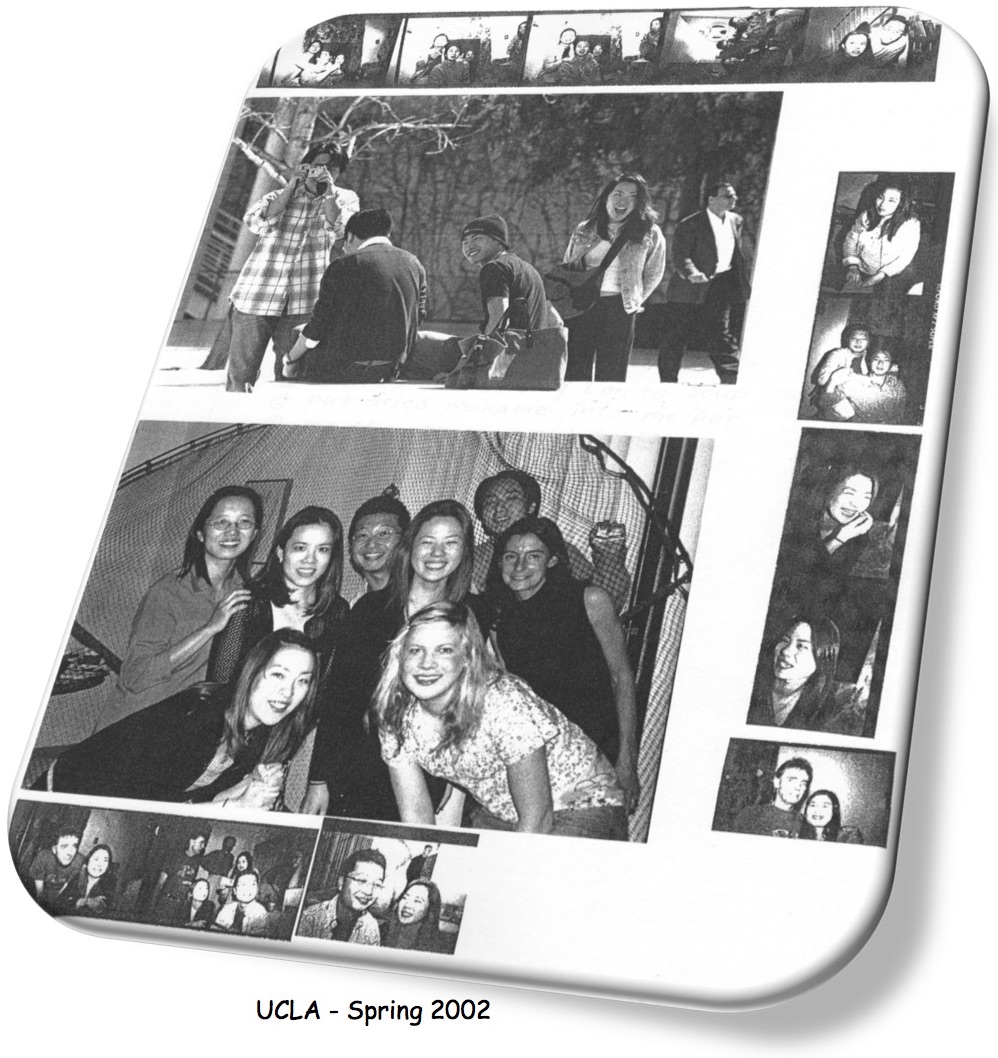 I look for films that reflect real or imagined life in a manner that is believable and entertaining. This usually correlates with popularity, which usually correlates with cultural resonance, which usually correlates with the prevalence of useful vocabulary, be it Academic Words or every-day variety, including slang and idioms, expressed in a manner that is contextually authentic. If vocabulary is thematically clustered as discussed above, all the more in favor of language retention. It's helpful to remember that thematic content lends itself to noticeable variations in spoken grammar which may be modeled throughout a given movie for the edification of language acquisition. Finally, I make a point of searching throughout the various movie genre (comedy, horror, action, sci-fi etc.) for cultural relevance.
I look for films that reflect real or imagined life in a manner that is believable and entertaining. This usually correlates with popularity, which usually correlates with cultural resonance, which usually correlates with the prevalence of useful vocabulary, be it Academic Words or every-day variety, including slang and idioms, expressed in a manner that is contextually authentic. If vocabulary is thematically clustered as discussed above, all the more in favor of language retention. It's helpful to remember that thematic content lends itself to noticeable variations in spoken grammar which may be modeled throughout a given movie for the edification of language acquisition. Finally, I make a point of searching throughout the various movie genre (comedy, horror, action, sci-fi etc.) for cultural relevance.
By allowing the broadest possible palate of choice, a seemingly unlimited supply of movies match the above criteria, and I have presented myself with a much wider variety of opportunities to create ESL lessons based on movies, AND I have been able to leverage a wider range of language and cultural settings from which my students can grow English. So I recommend that if teachers do likewise with cultural and thematic aspects and recognize their intrinsic pedagogical value, they will improve their chances for success when creating ESL lessons based around movies.
 With this in mind, here are some examples of movie selection at Movies Grow English. Chef (2014) is a comedy/drama focused on the explosive popularity of the food-truck industry in America. It's also the story of how a father and son find a way to love each other. Check HERE to read what students say about Chef. The Royal Tenenbaums (2001) is a comedy about an over-achieving American family suffering from high anxiety. The movie is filled with language that a family in crisis might use. Avatar (2009) takes place on an imaginary world in the grips of a power struggle that could just as easily happen here on Earth. It contains two distinct lexicons, one of a military culture, and one bonded to the forces of nature. I Love You, Man (2009) is selected for its over-the-top wit in the context of a man about to get married, who finds himself with no close friends. Click HERE to read what students say about I Love You, Man. Each movie provides a unique context from which to target an ESL lesson, and each is entertaining, culturally informative and stuffed with thematically-specific language, not to mention AWL* items.
With this in mind, here are some examples of movie selection at Movies Grow English. Chef (2014) is a comedy/drama focused on the explosive popularity of the food-truck industry in America. It's also the story of how a father and son find a way to love each other. Check HERE to read what students say about Chef. The Royal Tenenbaums (2001) is a comedy about an over-achieving American family suffering from high anxiety. The movie is filled with language that a family in crisis might use. Avatar (2009) takes place on an imaginary world in the grips of a power struggle that could just as easily happen here on Earth. It contains two distinct lexicons, one of a military culture, and one bonded to the forces of nature. I Love You, Man (2009) is selected for its over-the-top wit in the context of a man about to get married, who finds himself with no close friends. Click HERE to read what students say about I Love You, Man. Each movie provides a unique context from which to target an ESL lesson, and each is entertaining, culturally informative and stuffed with thematically-specific language, not to mention AWL* items.
Along with creative and pedagogical reasons for selecting movies for use in the ESL classroom, there are also practical considerations which must be addressed. Length of the movie (running time), difficulty of both the plot (story) and the language used, and student demographics are important factors to be aware of. How much time is there to watch and discuss the movie? How advanced in English are your students? How mature are they? Are there cultural, gender based, or legal considerations among your students which may preclude the viewing of some movies or some scenes? For movie selection, the prudent ESL professional has all the bases covered.
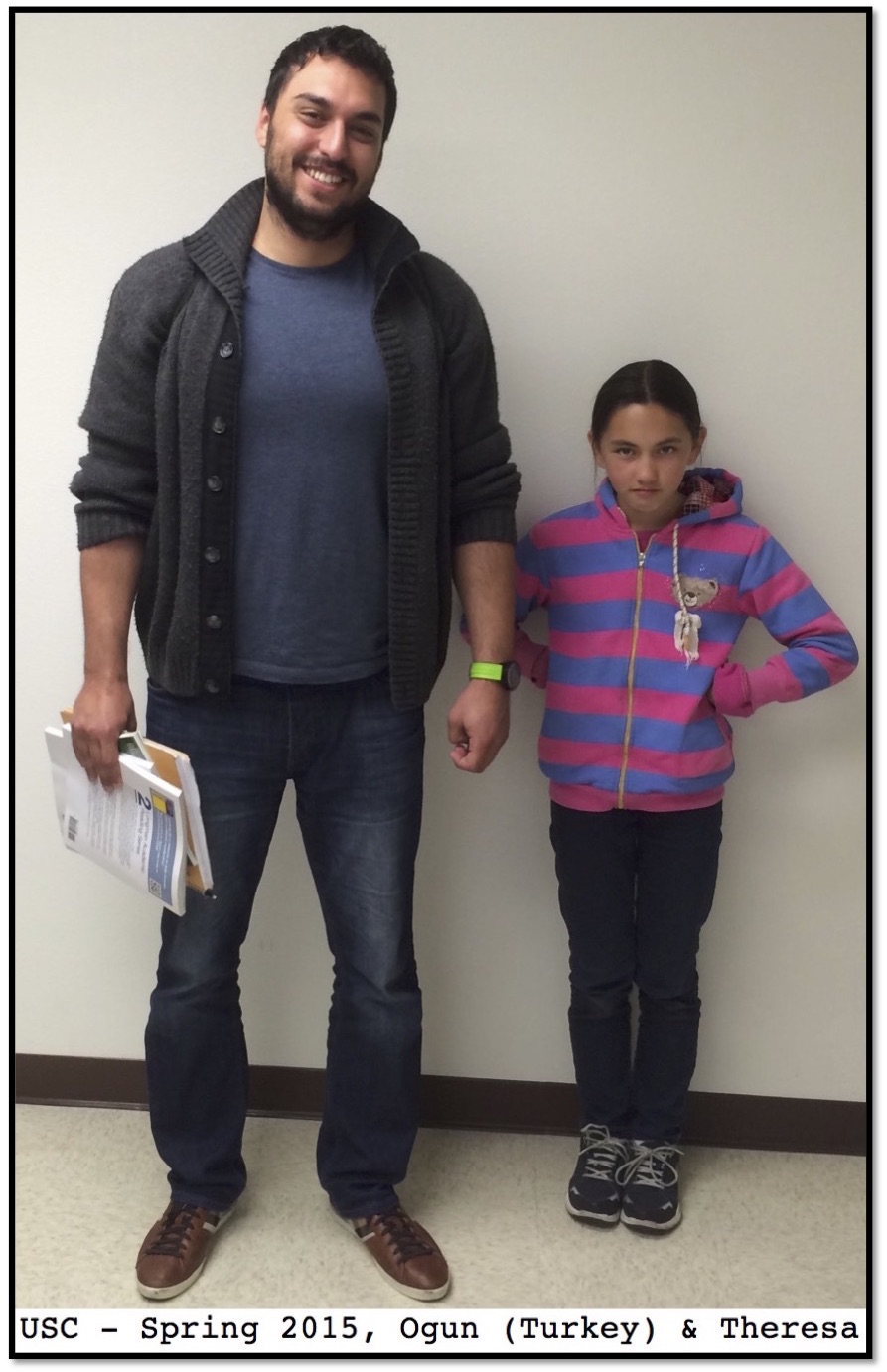 Personal favorites, especially carefully-chosen movie classics, can work wonders in the ESL classroom, but a word of caution. These treasures should be considered under the same rigorous criteria as any other movie. That said, a teacher who is passionate about a great movie that fits their classroom needs is ahead of the game. For me, such classics are Casablanca, The Wizard of Oz, It Happened One Night, It's a Wonderful Life and Lost Horizon, to name a few. Look HERE for a complete list at MGE. If you share my passion for these wonderful movies from Hollywood's golden era, my faith is that you'll share this passion with your students.
Personal favorites, especially carefully-chosen movie classics, can work wonders in the ESL classroom, but a word of caution. These treasures should be considered under the same rigorous criteria as any other movie. That said, a teacher who is passionate about a great movie that fits their classroom needs is ahead of the game. For me, such classics are Casablanca, The Wizard of Oz, It Happened One Night, It's a Wonderful Life and Lost Horizon, to name a few. Look HERE for a complete list at MGE. If you share my passion for these wonderful movies from Hollywood's golden era, my faith is that you'll share this passion with your students.
What about resources? To help with whole-movie selection, the Internet Movie Database is THE starting point. This site showcases almost every movie ever released in the commercial marketplace. Teachers can learn what a given movie is about, what critics and fans say, movie rating (via the MPAA), and much more. When selecting movies to show in the classroom, the IMDb is one of my favorite resources. Another valuable, old-school resource is Leonard Maltin's Movie Guide. This paperback has been updated every year since 1978. It contains concise reviews of thousands of movies old and new. It's an informative easy read. At www.rogerebert.commasterminded by Roger Ebert (1942-2013), one of America's most endearing film critics, you'll find detailed reviews which include well-researched setups and opinion. His work is now kept up such writers as Peter Sobczynski, Sheila O'Malley, and Glenn Kenny.
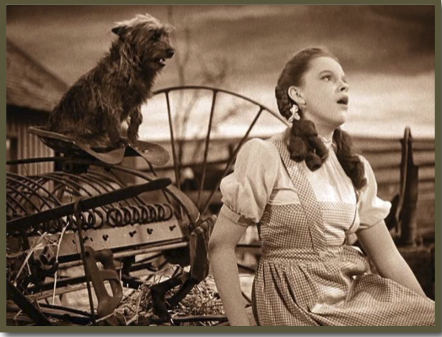
The Wizard of Oz (1939, Warner Bros.
)
The Streamlined ESL Movie Lesson
As I've gained understanding about how ESL students retain language and how movies can motivate students to interactively engage themselves in skill building and language acquisition, I've gotten more efficient at crafting ESL lessons that cut to the chase. In order for the whole-movie lessons accessible at Movies Grow English to all be as pedagogically sound as possible, I base them on a template that reflects my growing awareness of theoretical and practical considerations. Because lessons are built on the same general template, I know that I'm likely to get consistent results in the classroom. I also know where to find specific information within the growing catalog of lessons so I can scan for the best movie-lesson choice in the least amount of time. And since the template has built in flexibility, I can expect it to allow for design variations that add the personal touch to any lesson. All of his makes my work as a teacher easier and more productive.
The Featured Lesson (on the menu bar at the left of each page on MGE) is a representation of what to expect on all the 4-8 page whole-movie lessons. The element that is first meant to catch the eye is the movie poster in the upper left corner of page one. This attention grabber is a movie's calling card. The industry has been producing these gizmos since the silent era (just after the dinosaurs passed). Many of these posters have 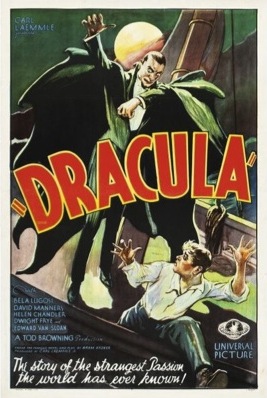 become collectibles. The Dracula poster on the right is from 1930. It was discovered in 2012 as insulation in the attic of a house in Pennsylvania and auctioned for over $500,000 (Wikipedia).
become collectibles. The Dracula poster on the right is from 1930. It was discovered in 2012 as insulation in the attic of a house in Pennsylvania and auctioned for over $500,000 (Wikipedia).
At the heading of each lesson there is brief setup of the movie which introduces the story and indicates the genre, relevance of the movie, length of the movie and the Motion Picture of America film rating. These factors help with film selection.
A skim down the page of the Featured Lesson reveals its economy of words and suggests how it might be used. I've written several screenplays, and one thing emphasized in screenwriting classes and workshops is that "white space is your friend." The same can be said for movie lessons. Both Li-Yun Lin and Keith Folse stress the value of brevity as a predictor of language retention. Research supports this. When a lesson lands in the hands of my student, I don't want them to feel overwhelmed by enormous blocks of text when a primary goal in the ESL classroom is to keep the affective filter at low tide.
The body of the Featured Lesson alternates between discussion prompts, vocabulary, and movie quotes, all for awesome purpose. You'll see screen shots designed to connect faces with names of important characters. Sometimes, there is a shot of a key plot point. Keeping in mind that authentic grammar and pronunciation is modeled throughout a high-quality movie and available for acquisition within the pliant minds of my students in that beautiful state of low affectation, my plan for their lea rning English when showing the movie in class might well be to simply focus on discussion and vocabulary. With a good movie, it may be prudent class management to just let the acquisition of grammar and pronunciation" flow like hot butter over fresh popcorn, baby."
rning English when showing the movie in class might well be to simply focus on discussion and vocabulary. With a good movie, it may be prudent class management to just let the acquisition of grammar and pronunciation" flow like hot butter over fresh popcorn, baby."
The finale of a whole-movie lesson contains take-away questions and a writing prompt. Students can post and publish their ideas about the movie at the FORUM. This is where I, the language facilitator, might offer general feedback on organization and what I lovingly refer to as GPS (grammar, punctuation & spelling). It is also a good place to provide validation of students' ideas and opinions. Positive teacher comments help to build confidence by encouraging students to write more. Sound familiar?
Showtime in the Classroom (A Brief Summary)
Class management has already been mentioned several times in this discussion. Now, I'd like to round out and summarize this area of the topic and refer you to How to Use Whole-Movie Lessons at the menu bar for a more in-depth break-down and examination a typical whole-movie lesson.
In short, the ESL movie classroom is an opportunity for the teacher to capitalize on the headroom provided by the lowered affective filter. This means the student's moniter is at a higher level of receptiveness to error correction. Less affective filter plus more monitor equals language retention. If this point has not already been tested with quantitative research, I have faith that one day it will.
In the early 1990s, I earned an RSA Cambridge Teaching Certificate. I'm compelled to point out that one of the key aspects of classroom error-correction that my CTEFLA tutors pointed out is the difference between mistakes and errors. We were reminded that a mistake is a kind of oops. In other words, the mistake-maker knows that they oopsed. When it comes to language, both language learners and native speakers may naturally self-correct.
However, the maker of a language error is not aware of the error. We learned at RSA Cambridge that the prudent teacher will avoid correcting mistakes in class because the student already knows it's a mistake. This action will unnecessarily raise the affective filter (not good). But errors, especially if they are target-grammar or target-vocabulary errors, should be corrected, even though this action could move the needle of the affective filter.
Here's an example of why movies are so awesome for ESL. What if mistakes are repeatedly made by a student because she or he is just plain lazy with grammar? Such a student might be on the path to language fossilization, for example, by not practicing the use of "s" endings? Here is a fellow who knows the rule, but has succumbed to the cardinal sin of laziness. If the milieu is a movie class, this can be a brilliant opportunity for the masterful teacher to heave-ho into the problem. The good-but-lazy student is likely having so much fun watching and talking about the movie that he or she is actually numb to the repeated poniard stabs of humiliation which the masterful teacher is delivering over one silly little "s". This could lead to a happy ending, a rescue from the shame of dreaded fossilization. Such is the power of error correction via the receptiveness of the monitor in conjunction with the lowered affective filter. Can I get please an amen?
Here are a few other general suggestions: I'll generally show a complete movie over the course of two class sessions. Each session should be at least ninety minutes to allow time for discussion. I use English subtitles (See Pros and Cons of captioning below). But situations may vary. Lin, Li-Yun (2000) at the English Department, Chinese Culture University-Taiwan has published how she uses movies-based ESL lessons in classes which are not dedicated to movie watching. In these circumstances, she recommends using abridged movies. She also uses first-language subtitles or dual subtitles (English and first language). For short-sequences, she may use first language subtitles, then dual subtitles, and finally English-only subtitles. The point here is to be aware of how movies can best be used in a given situation. Please view her publication at:
Motivational and Effective Film Activities for the Language Lab Class by Li-Yun Lin
Motivational and Effective Film Activities for the Language Lab Class by Li-Yun Lin.pdf
Jane King provides a good summary of the Pros and Cons of Captioning. BTW, Close Captioning is controlled at the video player itself (TV or monitor), while Subtitles, which are less obtrusive, are controlled via the DVD player. King also offers a broad overview of short-sequence and whole-movie approaches including selection criteria, captioning pros and cons, and notes on fair use (2002) at:
Using DVD Feature Films in the EFL Classroom by Jane King.pdf
To prepare for a film-based ESL lesson, I preview the lesson and decide on which vocabulary and comprehension questions to highlight. In class before starting the movie, I go over the vocabulary with the students and expand on the meanings as needed. This is a good time to throw in a little self-deprecating humor. It works wonders for the students' affective filters. I advise the students that the movie will be paused from time to time, and that they'll be prompted about what they just saw. The idea is to encourage focused interaction based on the movie.
Over the years, I've shown movies in a variety of classroom settings with various lighting arrangements. I like the lighting to be dim but not off. I want to be able to glance around the room during the movie and see students following the sequence of the lesson along with the movie. Therefore, as part of my preparation, I make a plan to manage the lighting. If I'm lucky, there is a dimmer switch in the room, or I can roll back the curtains to block out just enough outdoor light. Unfortunately, there have been situations where there are no windows and only an on-off light switch. The best choice may be to run the movie with lights off and pause it with lights on. I always make a point to keep the students informed of my intentions with the lighting.
Overall, a motivational environment in the movie-based ESL classroom can be achieved by choosing movies with care, creating stimulating lessons, providing time for lively discussion among students, making students accountable (assessments), and providing a FORUM where students are encouraged to publish their ideas.
n.b. Stephen Ryan has published a case study of how whole movies were used to partially solve a motivation problem in the Japanese tertiary school sector (1998) at:
Using Films to Develop Learner Motivation by Stephen Ryan.pdf
Fore more detailed information on teaching with movies, please link on the menu bar to How to Use Whole Movie Lessons to see a "living document"and Classroom Guidelines which details my ever-evolving thoughts on classroom presentation. It discusses the importance of assessments, especially in a dedicated movie class, but even in a one-off movie lesson. At the menu bar, there are Whole-Movie Assessments (A-K) (L-Z) for each of the more than 130 whole-movie lessons at Movies Grow English.
Copyright 101
- Background
By way of a disclaimer, what follows would not be taken as legal advice (I am not a lawyer.). For specific legal guidance in matters of intellectual property management, the legal or risk-management office of one's institution should be consulted. For the purposes of this discussion, the 1976 Copyright Act and in ![]() particular, Section 107, the Fair Use Doctrine for statutory information about copyrights may be referenced.
particular, Section 107, the Fair Use Doctrine for statutory information about copyrights may be referenced.
Obviously, a lot has happened in publishing since 1976, specifically the exploding presence of the world-wide web along with all manner of information technology. As the publishing world, with its many facets of technological innovation, evolves, new questions of ownership rights which are associated with the tech revolution have come into view and taken shape, every day it seems, and legal precedents are being set with regard to emerging critical copyright issues, particularly in the realm of fair use. It's good to know that the U.S. courts are fast on upgrading the legal measures of Fair Use as it pertains to these changes, but there are probably many new and changing situations which must stand in the queue and wait for legal clarity, and mine may be one of them. Thus, the purpose of the following discussion is my take on how Fair Use and the Copyright Act in 17 U.S. Code § 110(1) pertain to Movies Grow English and to other aspects of film media.
 As the world spins its way through the first third of the 21st century, the state of copyright clarity seems to reside on a continuum having degrees of legality and ambiguity. On one end are those perpetrations which clearly may trigger a legal remedy. Videotaping a private screening of a blockbuster movie that is about to be released world-wide and selling unlicensed copies in the neighborhood liquor stores is not ambiguous and not legal.
As the world spins its way through the first third of the 21st century, the state of copyright clarity seems to reside on a continuum having degrees of legality and ambiguity. On one end are those perpetrations which clearly may trigger a legal remedy. Videotaping a private screening of a blockbuster movie that is about to be released world-wide and selling unlicensed copies in the neighborhood liquor stores is not ambiguous and not legal.
On the other end of the continuum, all is copacetic. Paying a visit to your local Arclight theater on a Friday evening and laying down good money for a couple tickets and hot b uttered popcorn to see that same movie in IMAX 3-D is not ambiguous and as legal as it gets. What resides between these tips, is the great-wide open characterized by degrees of legality and ambiguity into which Fair Use comes to the rescue. It's no wonder judges do not want to define Fair Use too specifically. They instead lean toward broad interpretations which can later be adjusted (Stim).
uttered popcorn to see that same movie in IMAX 3-D is not ambiguous and as legal as it gets. What resides between these tips, is the great-wide open characterized by degrees of legality and ambiguity into which Fair Use comes to the rescue. It's no wonder judges do not want to define Fair Use too specifically. They instead lean toward broad interpretations which can later be adjusted (Stim).
Circling back to 2010 when I first conceived Movies Grow English, I quickly realized that in order to create the kinds of lessons that I envisioned, issues of Fair Use might come to bear. I had already observed that watching and taking in a movie in one's second language can be a dispiriting undertaking. So I wanted students to have in their hands the best possible learning tool which would inspire them to push past the self-doubt, to discover and to grow. In order to do this, I envisioned an ESL lesson that could breathe language and cultural relevance into the movie they were about to watch.
As discussed elsewhere at Movies Grow English, there was much trial and error, but the format I settled on includes the movie poster, screen shots that connect the characters with their names, and brief dialogue quotes, all of which is found source material. 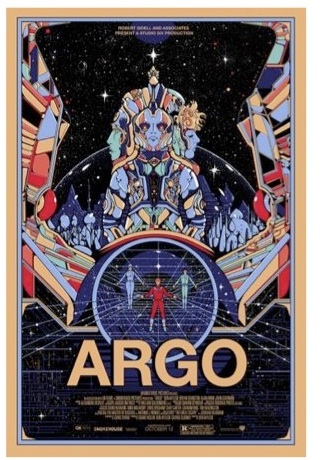 I was also aware that the very legality of showing a movie in a classroom has been called into question by some in academia. As a result, I felt that I would need to embrace a level of moral justification that would buttress my basic legal thesis for creating and selling ESL lessons at Movies Grow English. My thesis was and is: Movies Grow English recognizes the intellectual property rights of movies, which includes the exclusive right of movie makers to earn money from their creations, while supporting the fair use of movies and movie-related content.
I was also aware that the very legality of showing a movie in a classroom has been called into question by some in academia. As a result, I felt that I would need to embrace a level of moral justification that would buttress my basic legal thesis for creating and selling ESL lessons at Movies Grow English. My thesis was and is: Movies Grow English recognizes the intellectual property rights of movies, which includes the exclusive right of movie makers to earn money from their creations, while supporting the fair use of movies and movie-related content.
In addition, I realized that I wanted to do more than simply find ways to justify Fair Use and call it a day. Because of my deep love and respect for the film media, I decided to look for ways to not only take, but also give back, if only a little. Beyond Fair Use, I was determined to seek out a more proactive design for what I would call "Balanced Fair Use." So first I will briefly examine Fair Use itself and how it might pertain to MGE; then I will examine the concept of give back or balance, as I believe it pertains to Fair Use and Movies Grow English. Along the way, I might refer to related examples.
- What Constitutes Fair Use?
According to the 1976 Copyright Act, in the courts, there are four factors to consider when determining Fair Use:
The purpose and character of your use.
The nature of the copyrighted work.
The amount and substantiality of the portion taken.
The effect of the use upon the potential market.
As the above suggests, legal determinations can be complex, ongoing, and interpretive. Using Stanford Universities Libraries (2005-2018) as a resource, I identified samples of several court cases which seem to bear relevance to Movies Grow English with regard to using sourced content. Here are sample references to actual court cases which bring into question the four factors above.
The following circumstances were determined in U.S. court to be Fair Use: The purpose of using sourced material is "informational." (Monster Communications, Inc. v. Turner Broadcasting Sys. Inc., 935 F.Supp. 490 (S.D. N.Y., 1996).) A practice of creating thumbnails of copyrighted material to index information. (Kelly v. Arriba-Soft, 336 F.3d. 811 (9th Cir. 2003).) When the use of the copyrighted material is "transformative," meaning something is added or changed including the use and amount of the content used. (Warren Publishing Co. v. Spurlock d/b/a Vanguard Productions, 645 F.Supp.2d 402, (E.D. Pa., 2009).) A painter created a collage of whole or partial copyrighted photos, also deemed transformative. (Cariou v. Prince, U.S. Court of Appeals for the 2nd Circuit, No. 11-1197) In one case "the Seventh Circuit was primarily persuaded by the level of alteration [transformation]—the photo was posterized, background removed, text added" etc. The resulting image was deemed Fair Use. (Kienitz v. Sconnie Nation LLC, 766 F.3d 756 (7th Cir. 2014) A humor program copied videos from another source for editorial purposes. The court determined that the humor program added something new to the videos. (Equals Three, LLC v. Jukin Media, Inc., 14-09041 (C.D. Cal. Oct. 13, 2015) Source: https://fairuse.stanford.edu/overview/fair-use/cases/ (April 20, 2018)
With regards to digital delivery in the physical classroom it has been said that the Technology, Education and Copyright Harmonization (TEACH) Act enacted in 2002 and the Digital Millennium Copyright Act (DMCA) enacted in 1998, while attempting to clarify the rules of Fair Use, have only succeeded in creating more confusion in the minds of educators wanting to know if they can legally show a movie in the classroom. It turns out that the Copyright Act in 17 U.S.C. § 110(1), in its face-to-face teaching exemption, clearly allows movies to be shown if the face-to-face classroom is for educational purposes, "without having to secure any additional license or permissions." The institution must be non-profit. Both an entire film and a short-sequence may be shown. It must be a lawful copy of the movie and not distributed to students remotely. This is good news to those of us teachers who have been agonizing all these years over whether we have been breaking the law by showing movies in the classroom.
- Source:
http://www.ala.org/advocacy/sites/ala.org.advocacy/files/content/copyright/fairuse/web-digital%20delivery%20in%20classroomrev3psa.pdf (April 20, 2018) vetted by Jonathan Band legal counsel to ALA and ARL, Peter Jaszi, Professor of Law, Faculty Director of the Glushko-Samuelson Intellectual Property Clinic at American University Washington College of Law and Kenneth D. Crews, Director of the Copyright Advisory Office at Columbia University.
- Copyright on Campus: Showing movies in class and on the campus
http://guides.uflib.ufl.edu/copyright/video (April 22, 2018)
https://fairuse.stanford.edu (April 22, 2018) Stanford University Library, Copyright and Fair Use
What we see above is the small tip of a large iceberg. For a more complete picture, please visit the Copyright and Fair Use page of the Stanford University Library and the other links above.
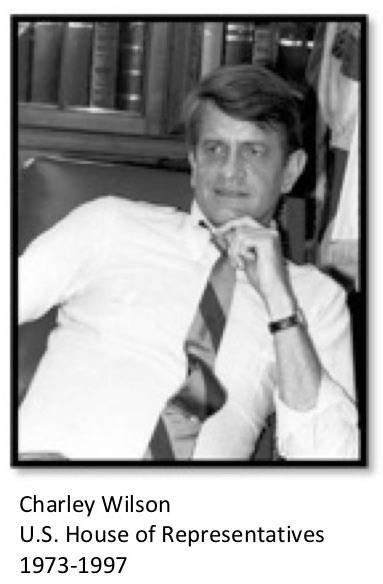 Please be advised: streaming a film into a classroom from a source such as Netflix or Hulu may be forbidden in their license agreement. Teachers who opt to subscribe to streaming services are advised to see if such restrictions exist in their current agreement because these restrictions would legally supersede Fair Use. For example, as of April 21, 2018 Netflix only allows educational screening of documentaries (https://help.netflix.com/en/node/57695). As for commercial releases, the contract states that the "Software is only for your own personal, non-commercial use" (https://www.library.unt.edu/news/may-one-stream-netflix-video-class-use [April 21, 2018]).
Please be advised: streaming a film into a classroom from a source such as Netflix or Hulu may be forbidden in their license agreement. Teachers who opt to subscribe to streaming services are advised to see if such restrictions exist in their current agreement because these restrictions would legally supersede Fair Use. For example, as of April 21, 2018 Netflix only allows educational screening of documentaries (https://help.netflix.com/en/node/57695). As for commercial releases, the contract states that the "Software is only for your own personal, non-commercial use" (https://www.library.unt.edu/news/may-one-stream-netflix-video-class-use [April 21, 2018]).
- Movies Grow English and Fair Use
The movie posters which occupy the upper left-hand corner of most MGE whole-movie lessons and the screen shots, mostly intended to generate face-name recognition of the characters in the movie, have been a copyright concern of mine since day one.
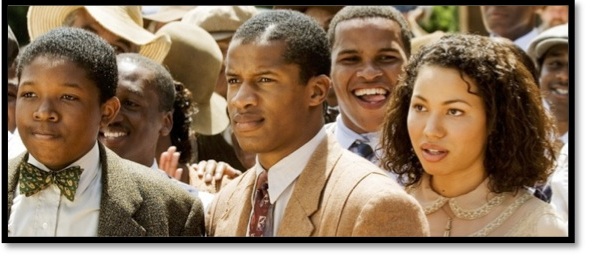 I have always felt that their
I have always felt that their
inclusion in MGE lessons is vital in helping students grasp the cultural and dramatic aspects of a movie (poster) and to grasp the movie's story line more easily by connecting names with faces (screen shots). This makes it easier for students to focus on learning English. It is curious to note that movie screen shots are often found far removed from their source, the studio which made the movie in the first place. In other words, a screen shot of any given movie character or a poster, derived from a source other than the studio, could well be a .jpg of a .jpg of a .jpg.
How would I ever be able to gain access to the trail of permission-granted if it even existed? Indeed, I have contacted several major studios multiple times to ask for "permission to use," and been greeted with silence. Could this be the "De Minimus" effect, too small to matter? (Sandoval v. New Line Cinema Corp., 147 F.3d 215 (2d Cir. 1998).) In any case, I see this as an example of where tolerance for ambiguity might be a blessing. It begs the question: Are the studios actually hoping that these photos will "copy viral" in hopes of promoting their movie? This theory makes sense to me and could form the basis of a de facto symbiotic relationship (balance) between Movies Grow English and the studio. More on this below.
To go a step further, seldom do I find a screen shot that is good-to-go ready for inclusion in one of my lessons. Screen shots nearly always require cropping, framing, compressing, and color adjustment. In some cases, creative choices are applied such as flipping photographs or forming collages. Screen shot characters are almost always identified on the lesson page by names of the characters represented by the faces.
As I mentioned earlier, brief dialogue quotes seem to fall into a zone of legal ambiguity which I'm not fully confident about. I earned a screenwriting certificate at UCLA Extension, and wrote four feature-length screenplays. So I have a pretty good idea that good screenplays, the ones that get made into successful movies, are extremely difficult to write. In the creative world, screenwriters deserve the highest respect. This is why a citation which acknowledges the work of the screenwriter(s) is included at the end of each whole-movie ESL lesson.
The citations are simple and brief because one ESL lesson design goal is to keep the lesson as streamlined as possible so students can focus on learning. Dialogue quotes add educational value because they provide students the opportunity to mimic the words and attitudes of the actors. This can have profound relevance because actors are professional reflectors of real life and culture while screenwriters put those eloquent utterances into their mouths. So when students mimic the lines, they acquire a sense of authenticity and entitlement of language. This is powerful stuff, and I can't say Thank you enough to both the screenwriters and the actors. This is why I think it's important to include brief dialogue quotes.
Now, I'd like to wheel back to the four factors of Fair Use and bring them into the discussion of posters, screen shots, and quotations as I use them in my ESL lessons.
(1) As for the purpose and character of use, my lessons are obviously intended to be educational. They are transformative in the sense that the purpose is transformed from entertainment to education, and in most cases, the content and context of the original work is tangibly transformed as described several paragraphs back. By inference, my copyright for my original work (the actual ESL lesson), does not include the content of the original posters, screen shots, and movie quotes but only the value I have added to them by adapting them to the needs of the lesson.
(2) As for the nature of the copyrighted work, according to the Stanford University Libraries, factual content is given more latitude for Fair Use than creative content because its subject matter is helpful for the average person. Since movies are creative content, the courts tend to hold a tighter rein on Fair Use. In my humble opinion, since I use movies for education and self-betterment, I argue that my call for Fair Use of source media in my movie lessons is as equally justified as Fair Use in factual content because my purpose is also to benefit the public (in a factual way), specifically international students, but in some cases, young native speakers of English as well.
(3) As for the amount and substantiality of the portion taken, I've already explained that I use very little source material and never for gratuitous reasons. Under factor (3), the courts have ruled that even a small portion of an original work could still be troublesome if what is used is at the very core of the original work. In fact, my discussion is not even about the very core of the creative work, which is the movie itself! This is also a good time to reiterate that Movies Grow English has never sold, shared, streamed, or distributed whole or partial movie content. My entire discussion need only relate to the lessons which are derived from the movies.
(4) As for the effect of the use upon the potential market, I have been on a number of movie sets and seen how hard the average stage hand tirelessly works, and I'd be the last guy who'd want to deliberately pirate capital from these guys who are the backbone of the Hollywood film industry. The strictly legal question is whether I could be depriving the copyright owner of income or damaging the movie's market. As for depriving income, my intention is exactly the opposite as I will discuss below (balance). Damaging the market usually refers to satirical use of content or parody which is so effective that it "diminishes or destroys the market value of the original work." Movies Grow English is not in the business of creating satire or parody.
- Movies Grow English and Balanced Fair Use
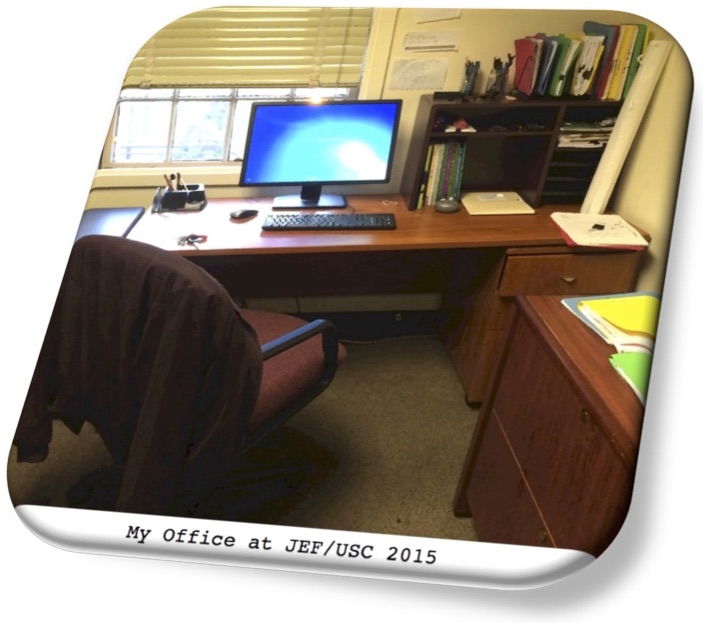 As detailed above, I believe I have ample legal justification for Fair Use. Still, this does not reach the level of moral justification that I mentioned earlier in this discussion because I feel that even if you call it Fair Use, I still get something from the industry (even if the industry doesn't lose anything), and I'm charging $1 on internet sales for some of my lessons (My students are not charged for lessons.). So from the beginning, part of my business design has been to identify ways for Movies Grow English to be a more responsible partner to the industry and to make these ways a matter of policy. With awareness that Movies Grow English is a small player, I don't expect that any give-back on my part will have a significant impact on the industry, but every teacher knows that their power resides in the indirect consequences of making good choices. Here are some ways of give-back that I have identified and acted on.
As detailed above, I believe I have ample legal justification for Fair Use. Still, this does not reach the level of moral justification that I mentioned earlier in this discussion because I feel that even if you call it Fair Use, I still get something from the industry (even if the industry doesn't lose anything), and I'm charging $1 on internet sales for some of my lessons (My students are not charged for lessons.). So from the beginning, part of my business design has been to identify ways for Movies Grow English to be a more responsible partner to the industry and to make these ways a matter of policy. With awareness that Movies Grow English is a small player, I don't expect that any give-back on my part will have a significant impact on the industry, but every teacher knows that their power resides in the indirect consequences of making good choices. Here are some ways of give-back that I have identified and acted on.
An old friend of mine, who has worked for years in the film industry as a sound mixer, and I once had a discussion, more of an argument, over whether music videos were an art form or simply a promotional tool. I was pretty sure they were an art form. That's what I wanted to believe. Today, I'm able to see my friends point, but I would now add that music videos are a little bit of both.
So to begin with, I'm pretty sure that movie posters and screen shots, so freely copied and recopied across the internet, are in the same general catagory as music videos but with a tinier content. In other words their primary purpose is probably to promote movies. With this in mind, I'm pretty sure that by using these artifacts in a prominent and respectful manner, I am doing my small part in cultivating the legacy of the movie. Not that it was my primary motive, but I think this has give-back value, and so using these artifacts in a prominent and respectful manner has become a matter of policy at MGE.
Peddling way back to when I first began making movie-based ESL lessons to use in the classroom (before Movies Grow English was even a dream), I used to copy & trim up or paraphrase a Leonard Maltin or Roger Ebert review for inclusion in a lesson. But I soon realized that, besides the fact that I was plagiarizing, it was actually easier (and more fun) to create my own content because I wanted the text to speak to my ESL students in a consistent voice that would set up the story in a positive way, in language they could understand, and I realized that my job was not to criticize, but to report and inspire. I began to carefully fact check and include the names of key players both in front of and behind the camera, especially those who had received accolades for their work.
By the time I began to publish MGE on the internet I was grateful to realize that I had developed a fairly sophisticated yet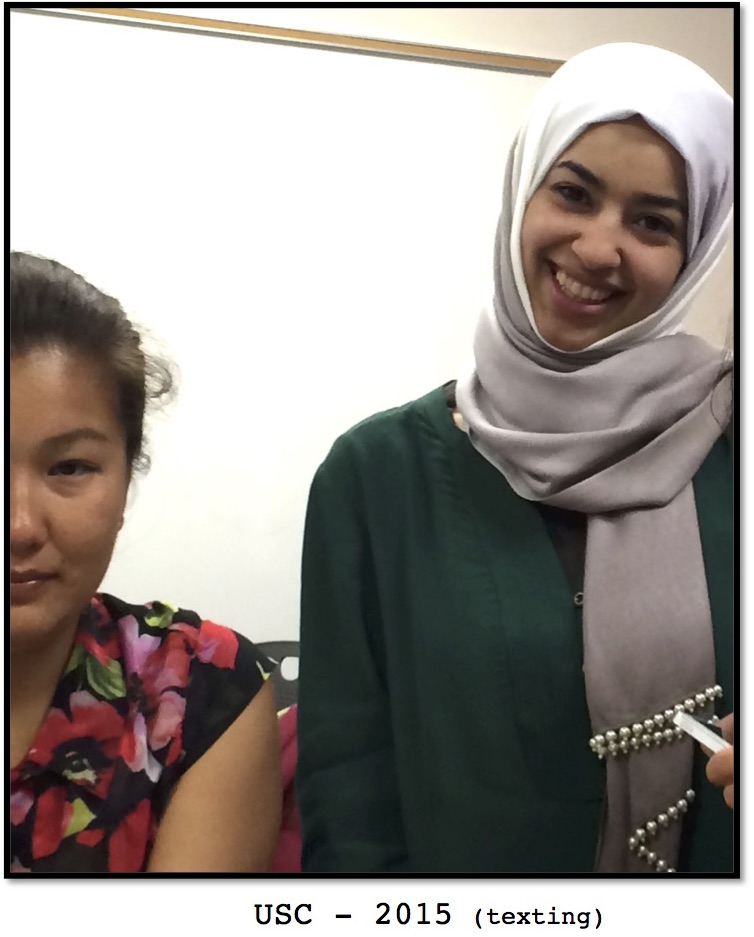 clean-and-simple setup-text format which was my own original writing and which always placed the movie and its makers in a favorable light. I have been doing it this way ever since. As a result, by now I can say with confidence that since many hundreds of my students have been given these lessons, I'm sure that a large number of them have been touched by my heartfelt show of respect for the art form and by how my ESL lessons are lovingly presented in the classroom. Perhaps some students have even been inspired enough to choose careers in the film industry having been affected by the power of my simple MGE mantra that movies bring language and dreams to life (I paraphrase Georges Méliès.). The same may apply to the many copies of my lessons that have spread wings and found new homes in the hands of teachers world-wide. This is an example of what I mean when I say that a teacher's power resides in the indirect consequences of making good choices.
clean-and-simple setup-text format which was my own original writing and which always placed the movie and its makers in a favorable light. I have been doing it this way ever since. As a result, by now I can say with confidence that since many hundreds of my students have been given these lessons, I'm sure that a large number of them have been touched by my heartfelt show of respect for the art form and by how my ESL lessons are lovingly presented in the classroom. Perhaps some students have even been inspired enough to choose careers in the film industry having been affected by the power of my simple MGE mantra that movies bring language and dreams to life (I paraphrase Georges Méliès.). The same may apply to the many copies of my lessons that have spread wings and found new homes in the hands of teachers world-wide. This is an example of what I mean when I say that a teacher's power resides in the indirect consequences of making good choices.
But soon after I finally took the plunge in 2010 and began to publish my ESL lessons, I received a cease-and-desist letter from my publisher saying that I could not sell material that had essentially been plagiarized. I was deathly afraid they were referring to my use of posters and screen shots. This would have put the kibosh on all of my hard work. But thankfully their concern was that I could not copy the editorial text of other writers. They were referring to my setup text. This content was, of course, completely original to the best of my knowledge, and I told them so. That was in 2010, and they have had nothing more to say about it since then. So, here is a copy of typical setup text for my ESL lesson for the movie "Brooklyn."
In 1951, Eilis Lacey (Saoirse Ronan,) a young woman living in Ireland, receives a sponsorship to come to America and start a new life in Brooklyn. But first, she must say goodbye to all she has known. In Brooklyn, she struggles to find the strength to survive and adapt to her new world, all the while facing intense homesickness. Then, she meets Tony (Emory Cohen), a young Italian man with a kind heart and big plans. But when tragedy requires Eilis to return to her roots in Ireland, she must make the cruelest decision of her life, a choice that will be terribly unfair to someone. Her story might well exemplify the saga of the American dream. Academy Award nomination for Best Picture, Leading Actress, & Adapted Screenplay. Rated PG-13 (111 min.) mike laib 2017.
As you'll notice, the language is straightforward, not too fancy, virtually idiom-free, present tense, and original. There are no opinions, only a hook, and the give-back is that it places the movie in a good light. This effect has been multiplied many times, in may lessons.
Regarding piracy, We've all heard through the media that it's a huge problem for the film industry. Being in the field of education puts me in a good position to make another good choice and perhaps provide give-back in this area. In recent years, I have made an effort to educate myself on various forms of piracy, the extent of piracy, why it is illegal, and the potential consequences of those who choose to pirate. A 2017 article in Variety by Todd Spangler reported that piracy is as big as ever despite all efforts to shut it down, in the multiple billions of dollars, with unlicensed streaming platforms (mostly destined for mobile devices) accounting for over 50% of all piracy activity (Muso, London 2017). It is no wonder the industry remains in a state of alarm.
 At the beginning of a teaching session at USC (and previously at UCLA) I make a point to have "the talk" with my film-class students. The opening prompt is, "Raise your hands if you have ever downloaded a movie without paying." Why would anyone ever raise their hand to that? Many of my students do. The simple answer is that they don't realize the fundamental wrongness in the act. "You mean it's theft?" "What am I actually stealing?" "I'm not hurting anyone." While my ESL students are extremely not likely to be harboring pirate tendencies, this is a good talking point for opening the discussion about why piracy really is theft. It seems most students have never given much thought to all the many men and women who work so hard to bring a movie to the market place, a movie whose impact may change their lives. I don't know how much good it does to have such a discussion, but I choose to believe it helps, especially if students get the same message from other sources (kind of like the "smoking is bad for your health" message). For sure, I am in a good position to set a responsible tone on this matter, and my aim has been to use that bully pulpit for all it's worth. I mean it when I say that I so admire the film industry, and in this way perhaps I can give back a little. Please visit http://www.moviesgrowenglish.com/Student.html#download for my Student FAQs discussion on piracy.
At the beginning of a teaching session at USC (and previously at UCLA) I make a point to have "the talk" with my film-class students. The opening prompt is, "Raise your hands if you have ever downloaded a movie without paying." Why would anyone ever raise their hand to that? Many of my students do. The simple answer is that they don't realize the fundamental wrongness in the act. "You mean it's theft?" "What am I actually stealing?" "I'm not hurting anyone." While my ESL students are extremely not likely to be harboring pirate tendencies, this is a good talking point for opening the discussion about why piracy really is theft. It seems most students have never given much thought to all the many men and women who work so hard to bring a movie to the market place, a movie whose impact may change their lives. I don't know how much good it does to have such a discussion, but I choose to believe it helps, especially if students get the same message from other sources (kind of like the "smoking is bad for your health" message). For sure, I am in a good position to set a responsible tone on this matter, and my aim has been to use that bully pulpit for all it's worth. I mean it when I say that I so admire the film industry, and in this way perhaps I can give back a little. Please visit http://www.moviesgrowenglish.com/Student.html#download for my Student FAQs discussion on piracy.
Another tiny but direct form of give back, is that I often assign my students to team up and watch a NEW movie in a theater. Then they must prepare an oral presentation about the movie which includes a summary and their recommendations. Sometimes they augment their presentations with PowerPoint or hand-drawn posters.
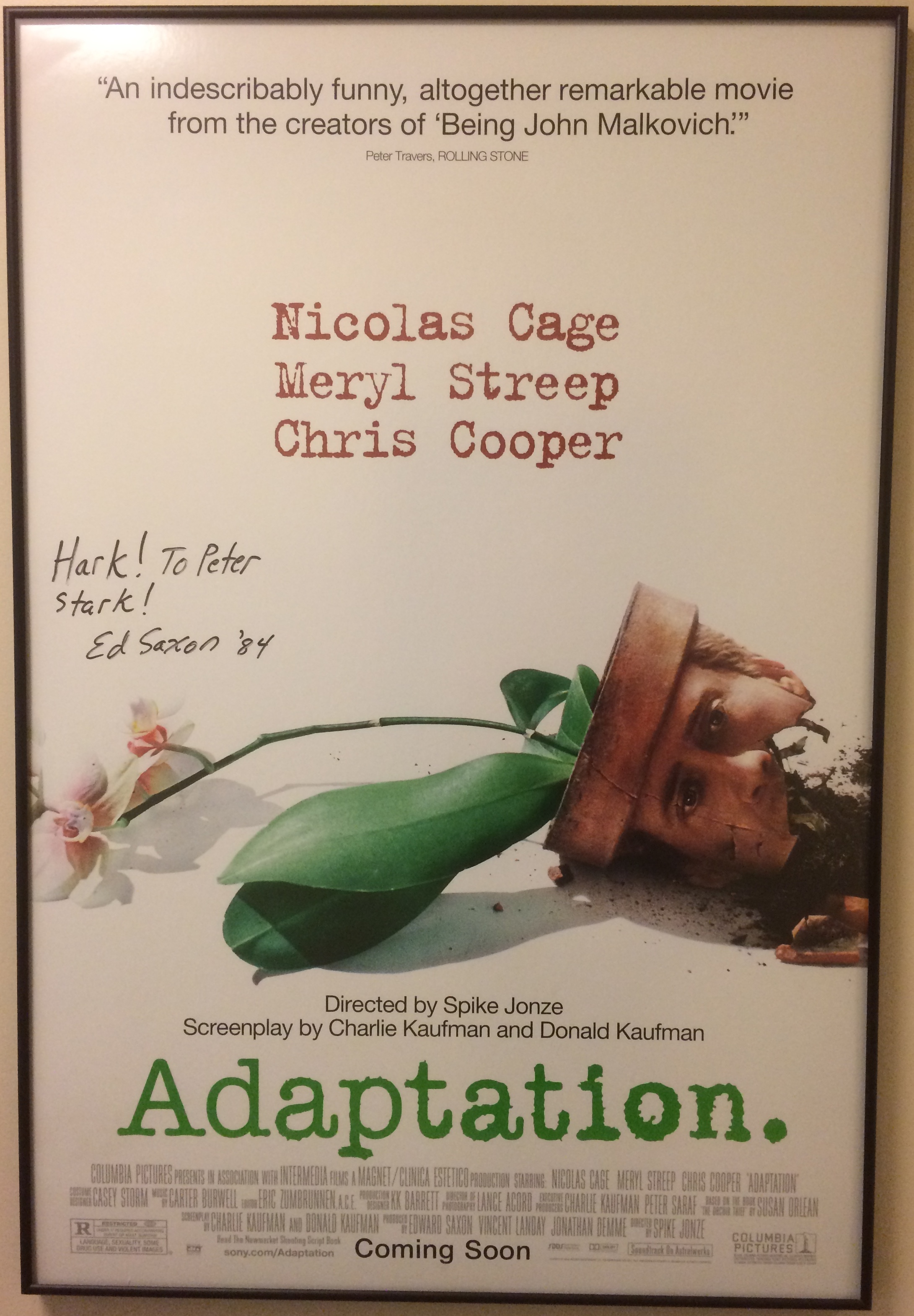 Finally, on the general topic of give back, I am also in a good position to link up people, who visit Movies Grow English and use my lessons, to the "inside tracks" of the movie world. For example, each of my lessons has a link to the movie's IMDb page and the Wikipedia page where tons of back story can be found. At MGE you can also visit http://www.moviesgrowenglish.com/Link.html where a whole bunch of ESL and movie-related links reside (Check it out!). Movies Grow English also has a Facebook page at https://www.facebook.com/moviesgrowenglish. Besides finding more movie links on it, you can read reports on new movies that I saw in a theater along with reports on movies watched as ESL lessons in the classroom. These contain even more links to the MGE Forum at http://www.moviesgrowenglish.com/forum/ where you can choose to read from more than 4000 film reports written by international students, all for the greater glory of movies.
Finally, on the general topic of give back, I am also in a good position to link up people, who visit Movies Grow English and use my lessons, to the "inside tracks" of the movie world. For example, each of my lessons has a link to the movie's IMDb page and the Wikipedia page where tons of back story can be found. At MGE you can also visit http://www.moviesgrowenglish.com/Link.html where a whole bunch of ESL and movie-related links reside (Check it out!). Movies Grow English also has a Facebook page at https://www.facebook.com/moviesgrowenglish. Besides finding more movie links on it, you can read reports on new movies that I saw in a theater along with reports on movies watched as ESL lessons in the classroom. These contain even more links to the MGE Forum at http://www.moviesgrowenglish.com/forum/ where you can choose to read from more than 4000 film reports written by international students, all for the greater glory of movies.
- Copyright 101, Conclusion
For a more thorough discussion on copyright and Fair Use, please visit the websites of the Stanford Libraries or the the U.S. Copyright Office listed below. As I mentioned in the disclaimer at the very beginning of Copyright 101, one should refer to a lawyer and ultimately the courts for the final word on any specific legal determination with regards to copyright and Fair Use. Hopefully my situation would never come to that because common sense suggests that we're all on the same side, meaning the relationship between The Film Industry and Movies Grow English IMHO is simbiotic. At the risk of sounding presumptuous, I wish to express my thanks to the film industry for giving us all the wonderful movies dating back to the days of Georges Méliès (Special thanks to Martin Scorsese for Hugo. This one changed my life.). I am sure that my many ESL students and others would join in this thanks. We support you!
Reference List:
Stanford Universities Libraries - Copyright and Fair Use c. 2005-2018, Written and curated by Rich Stim.
https://fairuse.stanford.edu/overview/fair-use/ (April 23, 2018)
Copyright Law of the United States: https://www.copyright.gov/title17/ (April 23, 2018)
Fair Use Index: https://www.copyright.gov/fair-use/index.html (Updated March 2018)
Global Piracy in 2017: TV and Music Illegal Activity Rose, While Film Declined, Tom Spangler, Variety Magazine (2017) http://variety.com/2018/digital/news/piracy-global-2017-tv-music-film-illegal-streaming-1202731243/
 Inside the USC School of Cinematic Arts, Spring 2018
Inside the USC School of Cinematic Arts, Spring 2018
Why Whole-Movie ESL Lessons cost (only) $1 USD

While much care goes into selection and development of lessons along with site administration, I want whole-movie lessons to be available at the lowest possible price, and I want all other content herein to be freely available. I believe $1 USD per whole-movie lesson is a small carrying cost for a good product that helps manage both prep-time and class-time.
Whole-Movie Books are slightly more than half the cost per lesson at about $.10 per page, which makes them an even better deal. The cool thing about online publishing is you only purchase the materials you plan to use. All of the above helps keep carrying cost extremely low.
I'm hoping that your support will allow me to focus more attention on Movies Grow English so that I can expand it to eventually offer hundreds of whole-movie lessons, and continue to share free stuff (Short-Sequence Lessons etc.), and moderate the Forum. ESL/EFL educators who like to develop their own material may submit lessons for possible publication and royalties. Thanks for your support. And especially, thanks to the the members of the movie industry for enriching the world with more than a century of great cinematic moments!
Class Dismissed
ESL students will be the first to agree that movies bring language to life. I'd like to add that movies bring dreams to life. With movies, students express gratitude when they are given license to suspend rigorous focus on linguistic structure while absorbing the emotional force and narrative dynamic of a good story. This process tends to ignite a student's inherent ability to acquire language and ultimately kindle a greater determination to interactively learn language, especially vocabulary and everything else. Movies Grow English is dedicated to making the dream come true.
If you'd like to respond, please contact me at: ![]() .
.
Thanks. --Mike Laib

